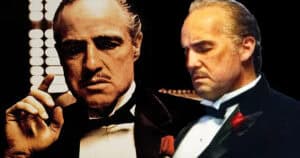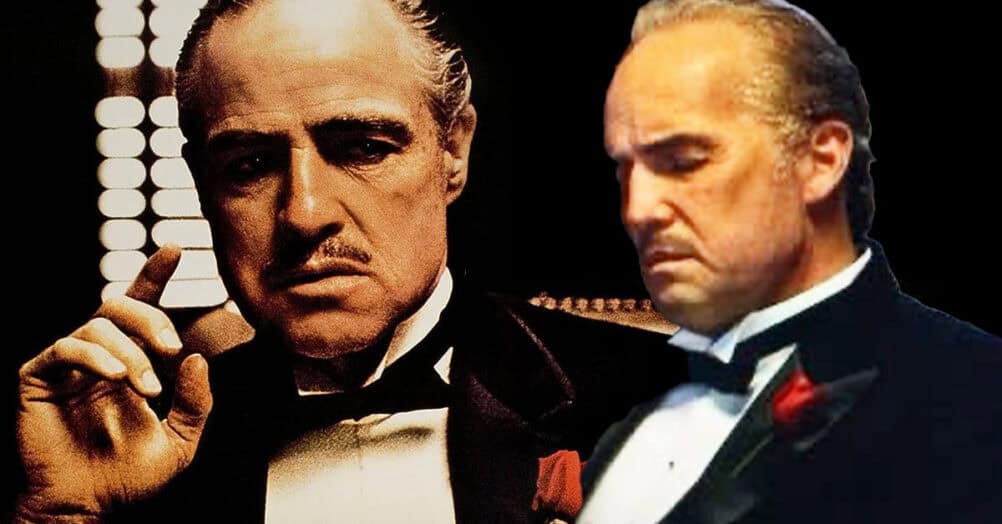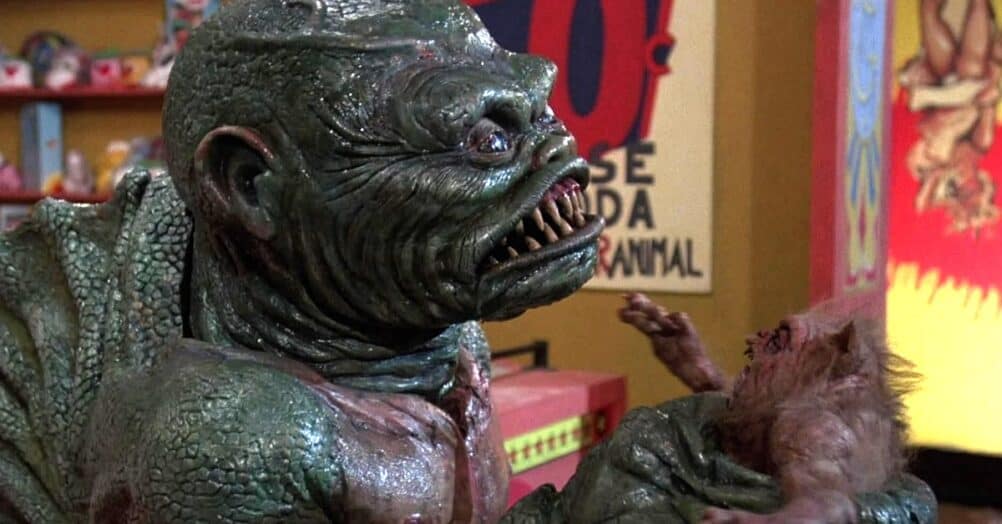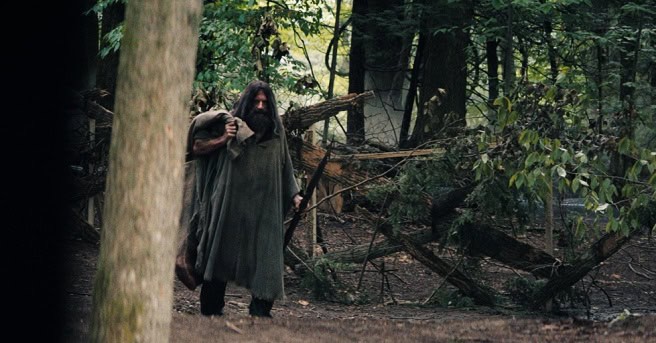
Neonomicon #1 (Avatar Press, $3.99)
by Adam Prosser
In spite of what a lot of people seem to think, Alan Moore has never said he’s retiring from comics. In fact, he’s made it clear that he does want to continue with the medium; he’s simply become disillusioned with the industry and has a lot of bad memories. Nevertheless, the continuation of The League of Extraordinary Gentlemen (well, in theory-it’s been delayed another year, apparently) and now Neonomicon stand as a testimony to Moore ‘s continued commitment to comics.
This comic returns to one of Moore ‘s oldest obsessions and literary antecedents: H. P. Lovecraft. Lovecraft’s been getting a workout in comics lately, but Moore beat the current trend by some time with The Courtyard, a 2003 Avatar comic that was in turn adapted from a story he wrote in 1994. Essentially a Lovecraft story set in the modern day, The Courtyard showed that not only did Moore have an in-depth knowledge of the mythos, he had some of Lovecraft’s talent for the unsettlingly weird and alien. The result was an effectively chilling, if small-scale, horror story.
Neonomicon is a direct sequel to The Courtyard (written as a comic first, this time) and it clearly aims to be more epic in scope. (I will, of necessity, be spoiling some of the events of The Courtyard in this paragraph, so you may want to skip it and pick up The Courtyard yourself-it’s well worth reading if you can find it.) The story is a police procedural, with the troubled FBI agent Merril Brears and her partner Gordon Lamper investigating the case of Agent Aldo Sax, the obnoxious G-Man protagonist of The Courtyard, who was driven insane by a “linguistic infection” at the climax of that story and went on a killing spree-“carving people into tulips”, as Lamper puts it-which, as we now learn, almost included a fellow FBI agent, who’s got a missing hand to show for his run-in with Sax. Brears and Lamper have a Hannibal Lecter-style encounter with the encarcerated Sax and then go undercover at Club Zothique, which eventually leads them to Johnny Carcosa, the “drug-dealing” villain of The Courtyard. But Carcosa may, obviously, be too much for any human agency to handle.
What’s interesting about both The Courtyard and Neonomicon is that Moore deviates from his usual writing style to a much greater degree than anything else he’s done. He doesn’t imitate Lovecraft’s actual style (which wouldn’t make sense, since the story’s set in the present day) but he goes for a slow, creepy, building tension and a descent into weirdness that’s very much in the manner of Lovecraft. He’s also doing the police procedural thing, which I don’t think he’s ever tackled unless you count Top Ten (which you probably shouldn’t). As a result, fans of Moore ‘s classic overstuffed style may be a little disappointed, and there’s no question that the story will require patience, but there’s plenty of tantalizing stuff being set up in this issue, with the suggestion that the story will be much more epic than its predecessor. Particularly interesting is a line suggesting that Brears actually recognizes the details of the case as being references to Lovecraft’s work, and suggesting that the characters may become engaged in some kind of metafictional struggle. This would not only be comfortable territory for Moore, it might be the most logical way to bring together his style with Lovecraft’s-after all, learning that you’re in a story and that there’s a writer pulling your strings isn’t much different from getting a glimpse of the Elder Gods and seeing the walls of reality crashing down…
That’s just a possibility for where things could be heading, though. For now, this is a relatively well-done episode of CSI with a striking horror climax. Moore ‘s only getting warmed up. Let’s hope that’s true of his comics career as well.




 Kenk: A Graphic Portrait (Pop Sandbox, $27.95)
Kenk: A Graphic Portrait (Pop Sandbox, $27.95)
by Graig Kent
One of the most fascinating “Reality TV” shows on right now is A&E’s Hoarders, a program that is equal parts documentary and gratuitous freakshow, peddling morbid curiosity and schadenfreude to the viewer. The show is semi-noble in theory, helping these damaged, often desperate people living in their own filth which they cannot bring themselves to dispose of, providing them with a therapist and a professional clean-up crew to aide them in sorting through and discarding their voluminous possessions during a two-day blitz of their residence. It’s quite fascinating, and, for the empathic, quite sad, with only the occasional glimmer of hope at the end of an episode that some of these people will find help and permanently change their ways. These people, to be blunt, border on the lowest of the low, psychologically speaking, terminally depressed or dealing with some other issues that manifests itself through compulsive accumulation and retention of things.
Igor Kenk, the subject of this documentary original graphic novel, is a different breed of hoarder than featured on that show. He’s a compulsive hoarder of a specific thing, focusing his attention almost singularly on bicycles and bicycle parts, to criminal extent. If you live in Toronto or its surrounding area, you will no doubt be familiar with his name, or at least his reputation as the world’s most prolific bicycle thief. When he was arrested in 2008 on 58 counts of theft and 22 counts of possessing and trafficking drugs, the police seized nearly 3000 bicycles from various locations, including a rented garage and the downtown Toronto storefront he owned and operated for a dozen years.
Kenk was already a notorious figure in Toronto prior to his arrest, with his reputation for peddling in stolen bicycles rather firmly established. In the press, Kenk often did little do discourage this perception, and even fancied himself a bit of a Robin Hood of bikes. Documentary filmmaker Jason Gilmour and producer Alex Jensen were intrigued by this character (he is most definitely best described as “a character”) and proceeded to shoot over thirty hours of footage of the man – fortuitously prior to his arrest – following him as he conducted his daily business on the street (for his storefront was far too cluttered to actually do business within), trolling the curbsides collecting scrap metal and selling it for a couple dozen bucks, and interviewing him about his background and curious slant on life. This footage, instead of being assembled into a traditional documentary feature, was instead passed along to writer/journalist Richard Poplak and graphic artist Nick Marinkovich, where it was assembled into this a quasi-fumetti graphic novel.
The threat of the book upon initially reading it is that it will make Kenk into a heroic, perhaps sympathetic or tragic figure. In some respect it does result in this, as Kenk’s curious charm is conveyed through his numerous ramblings about society and its wastefulness. Originally born and raised in Slovenia, where he was, at times, a policeman and a model, Kenk emigrated to Canada where he marveled at the riches and richness of the society and its culture. It didn’t take long before he was no longer in awe, and instead was ready and willing to exploit it, in his own small way, creating his own little fiefdom of black-market bicycles. Throughout the book, he observes a wasteful culture, a culture gone fat on the easy life, what he calls the lack of “monkey factor” (the need for survival instinct), and he’s not far off the mark. He may not be Plato or Aristotle but the man frequently has a point. His way of dealing with it was through running The Bicycle Clinic, where he proudly claims he can sell and maintain a bike for years on a pittance. His obsessiveness about bicycles permeates the book and his philosophies –even some of his bigger ideas– all seem to circle back into his business practices. Though there are hints of other interests, he seems fixated on two wheels, and acquiring them to which he all but explicitly admits to doing so illegally, although he never really hides this from the documentary team.
By the end of the book, the reader comes to know Kenk, if not at all understand him. There’s a great scene late in the book where he momentarily expresses guilt over appropriating stolen bicycle parts from vendors in a park, and he acknowledges he’s complicit in this act, but can’t seem to find the rationale for why he does it or why he can’t stop doing it. Running in parallel with the rise and fall of Igor Kenk is also the gentrification of the downtown business area where his shop is located. Like Scott Pilgrim before it, this graphic novel presents Toronto not just as a setting but as a vital entity. Knowing the end ahead of time, the reader is aware of his inevitable arrest, and it looms large over the documentary, setting a tone of “when is it going to happen and how”? It’s exciting and enthralling, with a definite momentum to it. An almost catharsis, his arrest validates the (in hindsight) obvious suspicions Kenk tries to downplay or avoid whenever broached.
Marinkovich illustrates the book by taking the footage and processing it using photocopiers, ink, and razor blades, so retaining a photographic essence, with a heavy artistic bent. There a street-‘zine aesthetic to it which compliments the subject and the subject matter perfectly. At times, the starkly black-and-white images can be difficult to discern, but overall it’s a bold and exciting visual experience. There was a high level risk of failure for such a project, both in content and design, but Kenk absolutely succeeds. If you’re a fan of documentary films or psychological profile reality TV shows like Hoarders I can’t recommend this book highly enough.
And if you’re wondering what happens next, one just needs to keep an eye on the national newspapers, who have already be keeping tabs on this quasi-celebrity since his release from jail earlier this year.
For more info, videos, or how to order, visit the official website.






Lady Deadpool One-Shot (Marvel, $3.99)
By Jeb D.
You know, this is our fault. Just like Marvel Zombies was: we loved the original concept, and against all odds, we keep buying the damn books, even after the idea has been run into the ground. No, I’m not buying them personally, and maybe neither are you: but collectively, we opened our wallets to every iteration of Mark Millar’s in-joke, and it’s already up to a fifth series. We can rail against Marvel wasting everyone’s time and talent on it, but it’s their job to sell us what we tell them we want, and in that respect, the cash register speaks pretty loudly.
And now, it’s Deadpool: as ubiquitous as Wolverine, a new series seemingly every month, with a panoply of offshoot characters that suggest a drunken Silver Age editor coming up with more and more friends, enemies, and pets to burden Batman and Superman with. And, thus, Wade Wilson not only runs around wisecracking all over the Marvel U., but we’ve evidently got alternate universes filled with variations on the guy (Dogpool? Scott Adams needs a word with these folks). The one under current discussion, Lady Deadpool, is a superpowered slob who inhabits a universe where a meaningful life depends on a cable TV connection, and challenging the status quo will result in a run-in with “General America!”… and there’s the usual quota of silliness, smart-ass comedy, and assorted mayhem.
There’s something encouraging about the fact that the book’s being written by a woman, Mary H.K. Choi (late of Missbehave Magazine), who’s not afraid to have her protagonist act like as much of a jerk as her male counterpart, ponder such unladylike ruminations as “I can smell my own ass,” and engage in some fairly repellent activities with a corpse; if she’s selling her sexuality at all, it’s more of a challenge than acquiescence to male ideals of a “hot babe.” The capable art by Kenneth Lashley helps reinforce the idea, keeping the boobage and buttage to the minimum possible, given the character’s typical skintight costume.
Unfortunately, while Marvel’s “Year of the Woman” continues to bring us some great new perspectives on superhero storytelling, the timing for this particular book feels wrong: what might have been an interesting, even brave, approach to a female comic book character is just swamped in the overexposure of all things Deadpool (god only knows what it’ll be like once they actually get a Deadpool movie off the ground). So, while the book has its virtues here and there, in the end, it’s just not strong enough to rise above the tide of Deadpool that threatens to drown the Marvel reader of today. I’d keep an eye out for other comics work from Choi, though: she seems to have the radical idea that a female comic book character doesn’t have to be a fanboy’s wet dream to be worth reading about. I don’t know that she fully succeeded this time, but it won’t surprise the hell out of me if she nails it next time out.


 Astro City Special: Silver Agent #1 of 2 (Wildstorm, $3.99)
Astro City Special: Silver Agent #1 of 2 (Wildstorm, $3.99)
By Jeb D.
The Sorcerer’s Apprentice was a crap movie (confession: I saw it for free). Probably nothing could have saved it. But its biggest misstep comes right at the beginning, when in a (very expensive-looking) prologue, the filmmakers (I use the term loosely) lay out for you, in advance, every mystery or question that might come up in the course of the film: we learn who all the important characters are, what they want, where their allegiances lie… so that the audience spends the next hundred or so minutes waiting for the characters in the story to catch up with what we already know. And while I regard Kurt Busiek and Brent Anderson as artists on a whole other plane from the hacks that puked up Sorcerer’s Apprentice, they make something of the same mistake at the beginning of this otherwise excellent comic.
One of the great background mysteries of Astro City was the fate of The Sliver Agent: an unnamed, unspoken tragedy that casts a pall of melancholy and shame over the citizenry, and becomes a reference point for characters in many of the intertwined stories. And while I’d have been OK with it having been left a mystery, this was clearly a tale that had the potential for some epic storytelling if Busiek and Anderson ever got around to it. And epic it is–this might be the most spectacular looking issue of Astro City since its earliest days. It also carries all the emotional punch of the terrible choices that Alan “Silver Agent” Craig faces as we learn just what happened to turn the population of Astro City against their hero, and the incredible sacrifice of his response. In some ways, it’s as simple a story as Busiek has ever told in this series, but if it finishes as strongly as it began, it will be one of the most compelling.
Unfortunately, a lot of what happens in the story has (much like Sorcerer’s Apprentice) already been laid out, if not necessarily in prologue form: readers of the previous Astro City: The Dark Age series are already ahead of the game, and even new readers will want to flip right past this book’s introduction page, which lays out much of the story–the crucial dilemma faced by the Silver Agent, and its painful solution– in the baldest terms in the form of a newspaper front page. So we spend the next 20-odd pages watching as Anderson has the characters act out the story outline that Busiek has already given us; the emotional punch I mentioned above would have been so much stronger had the reading of the book been a process of actually discovering the story. Hopefully, there will be a few surprises in Part Two.
So buy the book. It’s Busiek and Anderson doing what they do best: creating a fully lived-in world peopled with fondly drawn variations on familiar superhero tropes, and rewarding both the head and the heart. But if you want the optimal experience, skip that first page.





Gorilla-Man #1 of 3 (Marvel, $3.99)
By Jeb D.

One of the things I enjoyed most about the first Agents of Atlas series was Gorilla Man: not so much the character (though he is a great one), but the simple fact of his existence: Ken Hale. Once a man. Now a gorilla. We move on. The last thing I ever wanted for the guy was an origin story. But now, with the latest Atlas series predictably cancelled, I’ll take what I can get.
Given that we’re going to get a backstory, writer Jeff Parker has come up with one that is (one issue in) at least interesting, if not compelling. But let’s face it: the first time you see Gorilla Man, you know that his current state of being is due to one of two things: magical hogwash or pseudo-scientific balderdash; and the first page of this story makes it pretty clear which it’s to be, leaving the reader more or less marking time. The particulars of how and why Ken Hale became Gorilla Man do nothing to really enhance the character (we assume a Ben Grimm-style pathos the first time we meet him), they just slow us down till we get to the wisecracking, gunplay, and ass-kicking babes.
But get to them we do, and Parker’s got a corker of an action story going when we break out of the framing sequences of Ken’s early life (though I’m assuming future issues will feature more machine guns). In addition, artist Giancarlo Caracuzzo is probably the first to give these characters the same kind of electric Ike-era vibe that Leonard Kirk brought to the original Agents of Atlas series (Dave Johnson provides the wonderfully old-school cover). As a bonus, we get a letters page with answers from Ken himself (shades of Way of the Rat‘s Po Po!), and the first of several reprints of old Marvel stories featuring completely different gorilla men (though this one, “It Walks Erect,” barely qualifies; either as a gorilla man story, or as any real kind of bonus).
Sales of the various Atlas titles suggest that, despite Marvel’s best efforts, not many readers are digging what Parker has done with this crew, and I doubt this will change any minds. But if you’re already on the Atlas bandwagon, be sure and pick up the first part of what looks like the final Atlas adventure, for now.




 X-Women One-Shot (Marvel Comics, $4.99)
X-Women One-Shot (Marvel Comics, $4.99)
By Devon Sanders
You know that you can’t judge a book by its cover.
Marvel calls, “Bullshit!” on what you know.
See that cover to the left. That’s it. That’s all you need to know.
Milo Manara, one of Europe’s premiere “good girl” artists, draws the female cast of the X-Men, pouting, slopping hogs, fending off pirates, bending over and scantily clad while the writer most associated with The X-Men, Chris Claremont, provides a extremely dubious narrative and motivation for all of this to occur.
This comic is neither needed nor good but somehow sublime in its existence. X-Women is the ultimate 90’s X-Men comic, only nearly two full decades too late.

(And only for the art)
















Follow the JOBLO MOVIE NETWORK
Follow us on YOUTUBE
Follow ARROW IN THE HEAD
Follow AITH on YOUTUBE